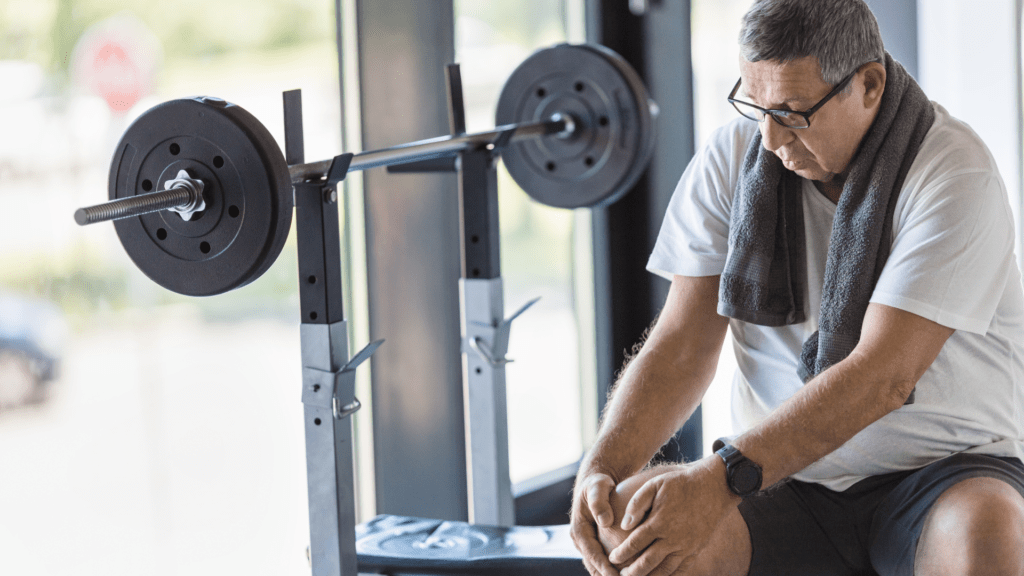In recent years, the fitness industry has seen a surge in the use of advanced fitness tech equipment, leading to a concerning increase in fitness equipment-related injuries. As more individuals turn to technology-driven fitness solutions, the potential for harm has become a pressing issue that requires a thorough examination and an increase in injury claims.
This article delves into the scope of fitness equipment injuries, the common causes of such injuries, the types of injuries they can cause, and the legal implications surrounding them. It explores the challenges faced by the industry and potential solutions, as well as the future of injury prevention in the fitness industry. With a spotlight on the rising trend of injury claims from fitness tech, this comprehensive exploration aims to provide valuable insights and considerations for all stakeholders involved in the fitness equipment ecosystem.
Fitness Equipment Injuries: A Growing Concern
The prevalence of fitness equipment injuries is becoming a growing concern in the fitness industry, prompting a closer examination of the factors contributing to this trend and the potential implications for fitness enthusiasts and industry professionals.
There are various factors contributing to the rise in fitness equipment injuries, such as improper use of equipment, inadequate supervision, lack of proper training, and overestimation of one’s abilities. The impact of these injuries extends beyond the individuals affected, influencing the overall landscape of the fitness industry.
Fitness equipment manufacturers are under increasing pressure to improve safety features and provide comprehensive guidelines for usage. Fitness facilities are reevaluating their safety protocols, striving to create a safer environment for their members.
Understanding the Scope of Fitness Equipment Injuries
To comprehend the scope of fitness equipment injuries, it is essential to delve into comprehensive studies and research conducted by reputable entities such as the Mayo Clinic, shedding light on the prevalence, severity, and underlying causes of these injuries within the fitness domain.
Research from the Mayo Clinic has revealed that fitness equipment injuries are more common than often perceived, affecting individuals across various age groups and fitness levels. These injuries have been studied extensively, uncovering valuable insights into the specific types of equipment that are associated with higher risks, the most prevalent injury patterns, and the impact of improper usage and lack of supervision. Reputable institutions emphasize the significance of tailored safety guidelines and proper training to minimize the occurrence and severity of such injuries, ensuring a safer and more effective fitness experience for enthusiasts.
Key Players in Addressing Fitness Equipment Injuries
The proactive intervention and guidance of industry leaders, healthcare professionals, and regulatory bodies play a pivotal role in addressing the growing concern of fitness equipment injuries, aligning with the efforts of organizations like the Mayo Clinic and the U.S. Consumer Product Safety Commission in promoting safety and injury prevention within fitness settings.
Industry leaders have been at the forefront of developing and implementing innovative safety standards and guidelines for fitness equipment, ensuring that users are protected from potential hazards. Healthcare professionals have collaborated with fitness equipment manufacturers to conduct research and provide valuable insights into injury prevention strategies, driving the development of safer and more effective equipment.
Regulatory bodies have also been instrumental in establishing and enforcing stringent safety regulations, working closely with industry stakeholders to enhance the overall safety and performance of fitness equipment. Through these collaborative efforts, significant strides have been made in reducing the incidence of fitness equipment-related injuries, improving the overall safety and well-being of individuals engaging in fitness activities.
Common Causes of Fitness Equipment Injuries
Understanding the common causes of fitness equipment injuries involves a comprehensive examination of factors such as improper usage, equipment malfunctions, and the impact of marketing tactics on user behavior, shedding light on the multifaceted nature of injury risk within fitness programs and facilities.
Improper usage, including lifting weights beyond one’s capacity or using machines with incorrect form, is a major contributing factor to fitness equipment injuries. Equipment malfunctions, such as faulty mechanics or lack of maintenance, can significantly increase the risk of accidents. The influence of marketing tactics, which may prioritize promoting certain equipment over others without emphasizing safety considerations, can sometimes lead to uninformed user behavior contributing to injury occurrences. These dynamics highlight the need for education, proper maintenance, and responsible marketing in the fitness equipment industry.
Types of Injuries Caused by Fitness Equipment
A comprehensive exploration of fitness equipment injuries encompasses an analysis of the diverse range of injuries incurred by participants, emphasizing the significance of injury prevention, regulatory measures, and user education in mitigating the impact of equipment-related mishaps.
These injuries span a wide spectrum, including muscle strains, sprains, fractures, and even more severe injuries such as dislocations and ligament tears. The nature of these injuries varies based on the type of equipment, exercise intensity, and participant’s familiarity with the equipment. Certain injuries are often attributed to improper use or lack of supervision, highlighting the crucial role of user education and supervision in minimizing the risk.
Regulatory standards for equipment safety and maintenance play a vital role in preventing equipment failures and associated injuries.
The Legal Aspect: Can You Sue for Fitness Equipment Injuries?
The legal considerations surrounding fitness equipment injuries encompass a complex landscape, prompting individuals to explore their options for legal recourse and potential claims related to injuries sustained during fitness programs or facility usage.
Injuries from fitness equipment usage can encompass a range of scenarios, from faulty machinery design to insufficient supervision or maintenance. When individuals suffer injuries, they may turn to the expertise of personal injury attorneys to navigate the legal complexities of their situation. These attorneys can advise on the viability of a personal injury claim and the potential compensation available.
The legal process often involves gathering evidence, determining liability, and negotiating with insurance companies or pursuing litigation. Exploring legal options can give the power to individuals to seek justice and compensation for the physical, emotional, and financial impact of their fitness equipment-related injuries.
Assessing Legal Options for Fitness Equipment Injuries
Assessing the legal avenues for addressing fitness equipment injuries entails a comprehensive examination of individual rights, responsibilities, and potential pathways for seeking legal recourse, aligning with the guidance and support offered by experienced personal injury attorneys in navigating the complexities of injury claims.
In these cases, individuals injured by fitness equipment should carefully document the circumstances of the incident, including any warnings or negligence observed in the design or maintenance of the equipment. Engaging a qualified personal injury attorney becomes crucial in determining liability and establishing the best strategy for pursuing compensation.
Factors such as the extent of the injury, impact on daily life, and the level of negligence involved often come into play during legal proceedings. It’s essential to recognize the importance of preserving evidence, consulting medical professionals, and understanding the relevant statutes of limitations when pursuing a fitness equipment injury claim.
Factors Affecting Fitness Equipment Injury Claims
The dynamics of fitness equipment injury claims are influenced by multifaceted factors, encompassing aspects such as evidence, liability, and the significance of professional guidance, necessitating a comprehensive understanding of the legal landscape and its implications for injury claim proceedings.
In establishing liability for fitness equipment injury claims, the evidential requirements play a pivotal role. Adequate documentation and expert testimony are essential to substantiate the circumstances surrounding the injury. Legal complexities often arise due to the varying standards of care and product regulations across different jurisdictions.
Professional guidance
is critical in navigating the intricacies of these claims, including the calculation of damages and negotiation with insurance companies. The timeliness of seeking professional assistance can be a critical factor in optimizing the potential outcome of an injury claim.
Working with Personal Injury Attorneys for Fitness Equipment Injuries
Collaborating with knowledgeable personal injury attorneys can provide affected individuals with invaluable support and expertise in navigating the legal aspects of fitness equipment injuries, offering guidance, representation, and advocacy throughout the process of seeking legal remedies for injury-related repercussions.
Personal injury attorneys possess comprehensive knowledge of the legal framework pertaining to fitness equipment injuries, which enables them to offer strategic guidance tailored to the unique circumstances of each case.
Their expertise encompasses the intricate nuances of premises liability, negligence, and product liability laws, give the power toing them to adeptly represent clients in pursuing the compensation they deserve for their injuries.
Engaging with a reputable personal injury attorney ensures that individuals receive steadfast advocacy, as these legal professionals adeptly negotiate with insurers and pursue litigation when necessary to safeguard the rights and interests of their clients.
Industry Challenges and Solutions
The fitness industry faces a multitude of challenges, ranging from regulatory complexities and marketing tactics to the imperative need for inclusive diversity and enhanced training standards, necessitating proactive measures and collaborative solutions to address the industry landscape’s inherent intricacies.
Regulatory complexities pose significant hurdles, with varying state and federal regulations governing fitness facilities, certifications, and health disclosures, often requiring meticulous adherence and expansive legal resources.
Marketing dynamics demand constant innovation and agility in the digital realm, where social media, influencer marketing, and personalized customer experiences hold sway, necessitating a continuous reassessment of brand strategies and consumer engagement tactics.
The imperative need for inclusive diversity in the fitness industry stems from the recognition of diverse body types, backgrounds, and cultural nuances, prompting reassessment of traditional fitness standards and fostering environments that embrace inclusivity and accessibility.
Enhanced training standards continue to evolve, integrating advancements in exercise physiology, nutrition science, and coaching methodologies, demanding ongoing education and proficiency validation to meet the evolving needs of fitness enthusiasts.
Regulation Challenges in the Fitness Industry
Navigating the regulatory challenges within the fitness industry involves an intricate examination of compliance, standards, and the evolving landscape of regulatory frameworks, warranting a comprehensive understanding of the industry’s regulatory dynamics and the associated implications for stakeholders and participants.
Compliance in the fitness industry encompasses adherence to various laws and regulations, including those related to safety, health, and business operations. Standards for equipment, training, and qualifications further contribute to the complexity of navigating regulatory challenges.
The evolving landscape of regulatory frameworks introduces the need for continual adaptation to updated laws and industry-specific regulations. This impacts business practices, safety protocols, and consumer protection, ultimately influencing the overall operational and financial structures.
Understanding these complexities is essential for stakeholders and participants within the fitness industry to ensure proper compliance and to navigate the ever-changing regulatory environment successfully.
Ensuring Safety and Accountability in Fitness Equipment
Ensuring safety and accountability in fitness equipment is a paramount consideration for industry stakeholders, encompassing measures such as equipment standards, periodic assessments, and accountability frameworks to safeguard the well-being of fitness enthusiasts and participants.
These measures form an integral part of an overarching commitment to promote safety and wellness within the fitness industry. By setting and adhering to rigorous equipment standards, manufacturers and suppliers play a crucial role in ensuring that fitness equipment meets essential safety requirements. Periodic assessments, whether through independent third-party evaluations or in-house quality control protocols, contribute to ongoing monitoring and improvement efforts. The implementation of accountability frameworks, which may involve tracking maintenance records and user feedback, further reinforces the commitment to safety and user well-being.
Addressing Misleading Marketing and Deceptive Claims
Addressing misleading marketing and deceptive claims within the fitness industry necessitates a vigilant approach towards regulatory compliance, ethical marketing practices, and the cultivation of consumer awareness to mitigate the impact of misleading representations and deceptive promotional tactics on fitness enthusiasts and participants.
By upholding regulatory compliance, entities in the fitness industry can ensure that their marketing communications align with industry standards and legal requirements. Ethical marketing practices, such as transparent product claims and truthful advertising, contribute to building trust with consumers.
Cultivating consumer awareness involves educating the public about recognizing deceptive marketing strategies and making informed purchasing decisions. This approach safeguards consumers from falling prey to misleading representations and give the power tos them to scrutinize fitness-related claims critically.
Improving Training and Certification Standards
Enhancing training and certification standards in the fitness industry is crucial for promoting professional competence, inclusivity, and the delivery of high-quality training experiences, necessitating concerted efforts to elevate industry standards, foster diversity, and give the power to fitness professionals with comprehensive training and certification frameworks.
By establishing rigorous and inclusive training programs, the fitness industry can ensure that professionals are equipped with the knowledge and skills necessary to meet the diverse needs of their clients. Professional development opportunities and ongoing education can further enhance the competence of fitness professionals, allowing them to stay updated with the latest industry trends and best practices.
Unifying certification standards across different specialties within the fitness industry can create a more cohesive and accountable professional landscape. It also offers a clear pathway for individuals seeking careers in fitness, facilitating a transparent and standardized approach to knowledge and competency assessment.
Promoting Inclusivity and Diversity in Fitness
Promoting inclusivity and diversity within the fitness industry is pivotal for fostering an environment that embraces and accommodates diverse demographics, necessitating initiatives that prioritize representation, accessibility, and equitable opportunities within fitness programs, facilities, and professional realms.
Ensuring representation involves showcasing individuals from various backgrounds in marketing materials, hiring staff from diverse communities, and offering programs tailored to different cultural preferences.
Accessible fitness options encompass providing affordable memberships, wheelchair-accessible facilities, and incorporating modifications for individuals with disabilities.
Equitable opportunities entail addressing pay disparities, offering mentorship programs for underrepresented groups, and promoting diverse leadership within fitness organizations.
The Future of Fitness Industry and Injury Prevention
The future trajectory of the fitness industry intertwines with the imperative need for injury prevention, reflecting evolving trends, sustainability considerations, and the persistent pursuit of creating safe, inclusive, and sustainable fitness environments for participants and industry stakeholders.
Looking ahead, innovations in fitness technology and equipment are anticipated to play a pivotal role in minimizing the risk of injuries. Advancements in wearable tech, such as smart fabrics and biomechanical sensors, will enable real-time monitoring of body mechanics, give the power toing individuals to proactively address potential issues.
The industry is witnessing a shift towards holistic wellness, with a growing emphasis on personalized training programs, nutrition, and mental well-being. Sustainable practices are becoming integral, driving the adoption of eco-friendly materials and energy-efficient facilities, fostering a symbiotic relationship between fitness and environmental stewardship.
Evolving Trends in Fitness Industry Safety
The evolution of safety trends within the fitness industry reflects a dynamic interplay of innovative technologies, best practices, and evolving standards, shaping a progressive trajectory towards enhanced injury prevention, sustainability, and the cultivation of safe fitness ecosystems for diverse participants.
With the integration of AI-powered fitness equipment, innovative technologies now offer real-time monitoring of form and movement, minimizing the risk of injuries during workouts. Advancements in virtual reality (VR) have revolutionized fitness experiences, allowing users to engage in simulated environments, enhancing safety through controlled, immersive training.
The industry’s dedication to sustainability is evident in the usage of eco-friendly materials for equipment manufacturing and the emphasis on energy-efficient facilities. These efforts contribute to a greener fitness landscape, aligning with the global demand for environmentally conscious practices.
Best practices in safety are continuously refined through data-driven insights, leading to the development of comprehensive training protocols and safety guidelines that prioritize injury prevention and participant well-being. As the pursuit of safe fitness ecosystems remains at the forefront, these dynamic trends continue to shape a progressive industry dedicated to enhancing the overall safety and well-being of fitness enthusiasts.
Impacts of Environmental Sustainability on Fitness Facilities
The impacts of environmental sustainability on fitness facilities resonate with the imperative need for eco-conscious practices, resource optimization, and the integration of sustainable infrastructures to foster injury prevention and create environmentally responsible fitness environments that align with global sustainability initiatives.
With the increasing awareness of environmental conservation, fitness facility owners and operators are reevaluating their approaches to minimize the ecological footprint of their operations. Embracing eco-conscious practices entails adopting renewable energy sources, implementing energy-efficient equipment, and reducing overall waste generation. Additionally, resource optimization involves optimizing water usage, utilizing recycled materials, and enhancing energy management strategies.
The integration of sustainable infrastructures encompasses the design and construction of green buildings, incorporation of natural lighting, and the incorporation of green spaces to promote a harmonious coexistence with the natural surroundings.
Frequently Asked Questions
What is the rising trend of injury claims from fitness tech?
The growing popularity of fitness technology, such as smart watches, fitness trackers, and virtual workout programs, has led to an increase in injury claims related to their use.
What types of injuries are commonly associated with fitness tech?
Injuries from fitness tech can range from minor strains and sprains to more serious issues like tendonitis, stress fractures, and even heart problems.
Why are there more injury claims from fitness tech now?
The accessibility and convenience of fitness tech has led to more people incorporating it into their daily lives, often without proper instruction or guidance, which can increase the risk of injury.
Can improper use of fitness tech lead to injury?
Yes, using fitness tech incorrectly or without proper form can put unnecessary strain on the body and increase the risk of injury.
Are there any precautions individuals should take when using fitness tech?
Absolutely. It is important to always read and follow the instructions for any fitness tech device or program, warm up properly before any physical activity, and listen to your body to avoid overexertion.
Should I consult a professional before using fitness tech?
If you have any pre-existing health conditions or are new to physical activity, it is recommended to consult a healthcare professional before using fitness tech to ensure it is safe for you.





